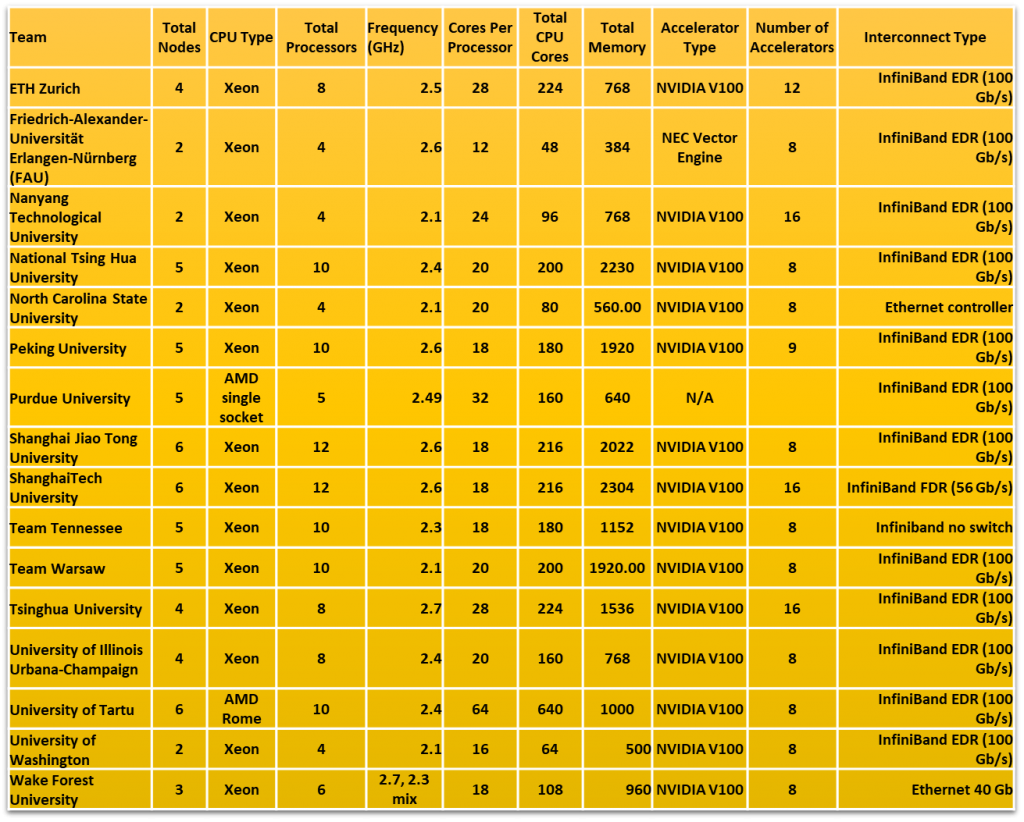Ok, you’re running a student cluster competition. You tell the university student teams that they can build any cluster they want with the only restriction being that it has to consume less than 3,000 watts during the competition. You’d think that they’d come back with roughly the same design, right? Wrong.
Looking at the table below for the SC19 Student Cluster Competition configurations, you see a wide variety of approaches, components, and sizes.
On the small side, you see FAU, Nanyang, NC State and University of Washington sporting dual-node systems – the smallest possible in this competition. Wake Forest adds another node for three total. While they don’t have a lot of CPU power, they are packed to the gills with at least eight NVIDIA V100 GPUs. Our pals from Nanyang have doubled that up by shoehorning in 16 V100 GPUs – very sporty.
ETH Zurich, Tsinghua University, and the University of Illinois Urbana-Champaign take the middle ground with sensible four node clusters that provide a significant amount of CPU capacity along with plenty of accelerated power. UIUC brought along eight V100 GPUs, while ETH is driving 12, and Tsinghua is running a full slate of 16 V100s.
The biggest clusters at SC19 weigh in at five and six nodes. There used to be a time when the largest clusters were eight and ten nodes, but that’s before the rise of GPUs. Now, the biggest of the big are much smaller, but pack a much more potent computational punch.
The two Shanghai teams (Shanghai Jiao Tong and ShanghaiTech) and University of Tartu are all pushing six node clusters with eight or 16 NVIDIA V100 GPUs. There are a heap of teams running five node systems including, NTHU, Peking, Purdue, Tennessee and Team Warsaw.
The average number of nodes this year is 4.125
, which is in line with recent history, but far smaller than the 6-7 node average that we used to see back before the advent of GPU acceleration.
Posted In: SC 2019 Denver, Latest News

